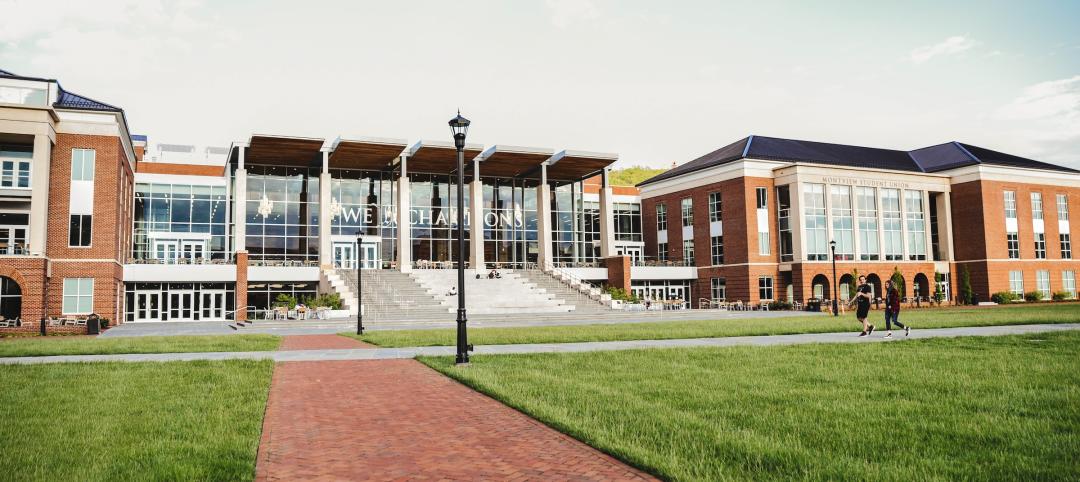When earthquakes occur, it is the older buildings that often collapse first because they are not engineered to resist powerful earthquake forces. Those newer buildings, however, that look structurally sound often sustain non-structural damage that, despite appearances, can become unusable. This is what happened last week in Christchurch, resulting in many buildings that can no longer be occupied.
Last week our firm sent in an investigative team of structural engineers to assess the damage to Christchurch. As engineers, what we found was quite shocking but not unexpected: 30-50% of buildings constructed of unreinforced masonry (URM) sustained severe damage or collapsed. By comparison, the total damage in Port-au-Prince, Haiti as a result of last year’s earthquake was less from a percentage standpoint than what was experienced in downtown Christchurch last week. Several older non-ductile concrete buildings (existing structures that fail in a brittle manner under the load of an earthquake) have also been severely damaged or collapsed.
These findings provide proof that countries and cities that do not have mandatory retrofit ordinances for hazardous buildings are exposed to tremendous risk – not only in New Zealand, but everywhere else in the world.
Our team also observed that many, newer buildings experienced significant non-structural damage, which is dangerous for building inhabitants and greatly impacts functionality and business continuity.
People in cities situated in areas of high earthquake risk may have a false sense of security because they do not fully understand the intent of most building codes and equate code compliance to mean earthquake-proof. In fact, even in advanced earthquake engineering countries such as New Zealand, the US and Japan, most building codes are minimum guidelines for “life safety” only and have often proven to be inadequate for building sustainability, and at times, survivability.
Buildings must be better designed for disasters. Mandatory URM and non-ductile concrete structure retrofit ordinances must be put in place to save lives. And high-performance earthquake engineering must be practiced for sustainability of new buildings so they can support continued functionality of cities after a disaster. This must be done worldwide.
Together with my team, I have spent the past 13 months in Haiti working with the Ministry of Public Works, the United Nations and the Pan American Development Foundation assisting Haitian engineers to assess the damage to 400,000 buildings and repair 2,000 damaged houses as a USAID pilot project. The tragedy has to be experienced to be understood. Hiroshima is one of the great disasters of the twentieth century and has a firm place in our historical imaginations. The bomb killed 200,000 people. Yet, in terms of the loss of human life, Haiti’s earthquake caused even greater loss – over 230,000 lives.
The unfortunate truth is that engineers have predicted major earthquakes in Christchurch and Port-au-Prince for years. Of course, we could not say when but we knew there was a high probability of another earthquake. Little was done by the respective governments or the private sector. How distressing to realize that with proper engineering, much of the loss of life, structural damage and financial loss could have been reduced significantly.
Today, we know enough about constructing seismic-resistant buildings that allow them to withstand large earthquakes, protect their inhabitants and allow businesses to continue functioning. That said, today’s earthquake damage repair technology has also advanced so that in the next 24 months 100,000 homes in Haiti can be repaired with local materials and masons so that they are safer than before and can be reoccupied by their inhabitants, allowing them to leave the terrible conditions in the tent cities.
Preparing for disasters is not difficult. Responsible governments, the private sector and residents must act on the knowledge that these events can be anticipated and preparations must be made for their eventual occurrence, thereby saving lives and minimizing damage.
Dr. Miyamoto is President and CEO of Miyamoto International, a global earthquake and structural engineering firm.
Related Stories
Regulations | Oct 4, 2023
New York adopts emissions limits on concrete
New York State recently adopted emissions limits on concrete used for state-funded public building and transportation projects. It is the first state initiative in the U.S. to enact concrete emissions limits on projects undertaken by all agencies, according to a press release from the governor’s office.
Building Materials | Oct 2, 2023
Purdue engineers develop intelligent architected materials
Purdue University civil engineers have developed innovative materials that can dissipate energy caused by various physical stresses without sustaining permanent damage.
Giants 400 | Oct 2, 2023
Top 60 Data Center Engineering Firms for 2023
Jacobs, Burns & McDonnell, WSP, EXP, and Alfa Tech head BD+C's ranking of the nation's largest data center sector engineering and engineering/architecture (EA) firms for 2023, as reported in Building Design+Construction's 2023 Giants 400 Report.
Market Data | Oct 2, 2023
Nonresidential construction spending rises 0.4% in August 2023, led by manufacturing and public works sectors
National nonresidential construction spending increased 0.4% in August, according to an Associated Builders and Contractors analysis of data published today by the U.S. Census Bureau. On a seasonally adjusted annualized basis, nonresidential spending totaled $1.09 trillion.
Giants 400 | Sep 28, 2023
Top 80 University Building Engineering Firms for 2023
AECOM, Jacobs, BR+A, and Salas O'Brien head BD+C's ranking of the nation's largest university sector engineering and engineering/architecture (EA) firms for 2023, as reported in Building Design+Construction's 2023 Giants 400 Report. Note: This ranking includes revenue for all university/college-related buildings except student residence halls, sports/recreation facilities, laboratories, S+T-related buildings, parking facilities, and performing arts centers (revenue for those buildings are reported in their respective Giants 400 ranking).
Construction Costs | Sep 28, 2023
U.S. construction market moves toward building material price stabilization
The newly released Quarterly Construction Cost Insights Report for Q3 2023 from Gordian reveals material costs remain high compared to prior years, but there is a move towards price stabilization for building and construction materials after years of significant fluctuations. In this report, top industry experts from Gordian, as well as from Gilbane, McCarthy Building Companies, and DPR Construction weigh in on the overall trends seen for construction material costs, and offer innovative solutions to navigate this terrain.
Office Buildings | Sep 28, 2023
Structural engineering solutions for office-to-residential conversion
IMEG's Edwin Dean, Joe Gulden, and Doug Sweeney, share seven key focuses for structural engineers when planning office-to-residential conversions.
Resiliency | Sep 25, 2023
National Institute of Building Sciences, Fannie Mae release roadmap for resilience
The National Institute of Building Sciences and Fannie Mae have released the Resilience Incentivization Roadmap 2.0. The document is intended to guide mitigation investment to prepare for and respond to natural disasters.
Data Centers | Sep 21, 2023
North American data center construction rises 25% to record high in first half of 2023, driven by growth of artificial intelligence
CBRE’s latest North American Data Center Trends Report found there is 2,287.6 megawatts (MW) of data center supply currently under construction in primary markets, reaching a new all-time high with more than 70% already preleased.
Giants 400 | Sep 20, 2023
Top 75 Hospitality Facility Engineering Firms for 2023
Jacobs, IMEG, EXP, and Tetra Tech top BD+C's ranking of the nation's largest hospitality facilities sector engineering and engineering/architecture (EA) firms for 2023, as reported in Building Design+Construction's 2023 Giants 400 Report. Note: This ranking includes revenue for all hospitality facilities work, including casinos, hotels, and resorts.
















